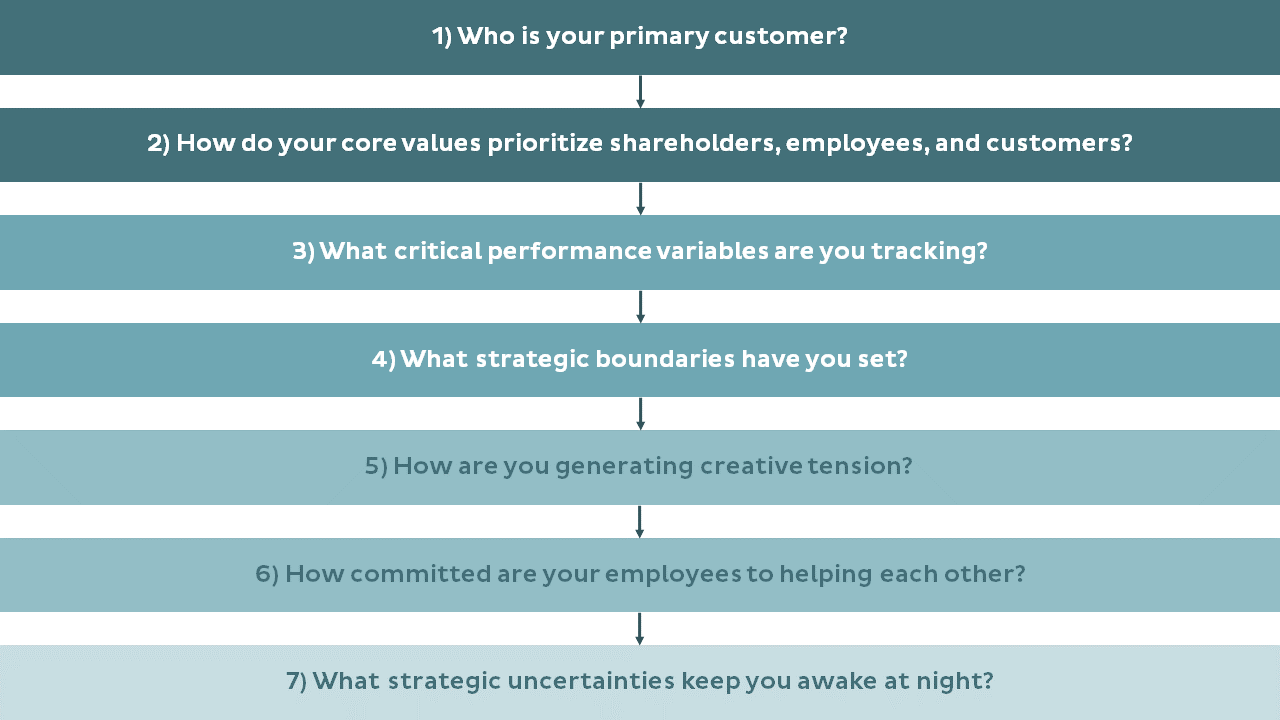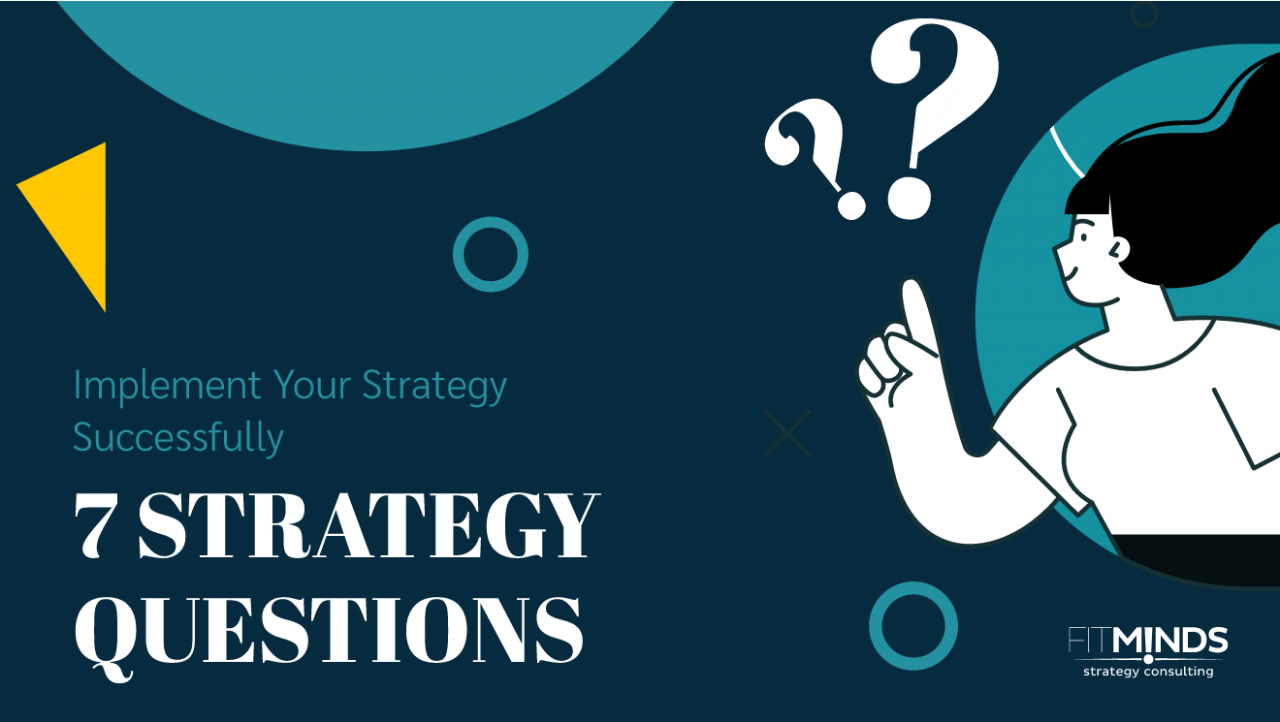To keep your strategy working in hard times, you have to address its weaknesses in good times. Robert Simons, a professor in Harvard Business School, determined seven critical questions that you need to ask to spot your strategy’s weaknesses.
As Simons states in HBR Nov. 2010 issue, “The questions may seem obvious, but the choices they represent can be tough, and their full implications are not always immediately clear.”
Simons’ questions test:
- Q1 & Q2 – whether you have strict priorities
- Q3 & Q4 – whether you have clear performance variables and constraints that focus you on the priorities
- Q5 & Q6 – whether you are using techniques to improve motivation
- Q7 – whether you have the ability to adapt strategy to changing market conditions.

Prioritization
1) Who is your primary customer?
Resources are limited. You cannot meet and exceed the needs of all customers. So, focus your resources on the primary customers. Focus on understanding their needs. Use your resources for your primary customers. Anything else that does not add value to your primary customers should receive just bare minimum. The more you spend for secondary elements, the less you spend for your primary customers.
2) How Do Your Core Values Prioritize Shareholders, Employees, and Customers?
It is not enough to have inspirational core values. Core values also must set the prioritization among shareholders, customers, and employees. Which one comes first? There is no correct answer to this. But you have to choose one. Otherwise, not making a clear selection might make things worse, especially when there happens a conflict of interests among them.
Focus
3) What Critical Performance Variables Are You Tracking?
Creating and tracking too many metrics creates ambiguity in prioritization. Furthermore, analyzing and interpreting them becomes overwhelming. Simplify your scorecards. Focus on a small number of metrics which directly shows which way your strategy is leading: success or failure? Then, you will have more time to focus on what really matters.
4) What Strategic Boundaries Have You Set?
During the execution of a strategy, not everything is precisely defined and there are always gray areas. Actions of people withing the business will affect the course of the execution. So, there is always a risk. In this case, there are two approaches:
- If the process is delicate and you want to minimize risk, then tell people exactly what to do.
- Else, if you want to leave people some room for innovation, you should tell them what not to do, and leave the rest in their hands.
Motivation
5) How Are You Generating Creative Tension?
Generating creative tension within your business is a nice way to motivate employees. In other words, you should create an environment that will lead to better ideas or outcomes. There are some techniques that will enable you to do so:
- Assign challenging goals.
- Rank according to performance.
- Hold people accountable for measures broader than their resources.
- Allocate costs to business units to generate accurate cost data.
- Create cross-unit teams to enrich the perspectives of employees.
6) How Committed Are Your Employees to Helping Each Other?
Employees within a business should always work coherently. Since they have a shared goal at company-level in addition to their personal goals, it is crucial that they are committed to each other. To make sure they are, there are four main things you should do:
- Make people proud of your business’s mission.
- Make people feel that they are a part of an elite/limited/hard-to-be-part-of team.
- Build trust among people.
- Assure fairness, especially in compensation and benefits.
Adaptability
7) What Strategic Uncertainties Keep You Awake at Night?
We live in a world of constant change and uncertainties. The assumptions you make about your strategy might become out of date. Actually, it will, but when? To adapt your strategy timely, clearly state the underlying assumptions and constantly monitor if anything changes regarding those assumptions. As you identify these changes, you should generate new action plans.
Conclusion
Successful implementation of a strategy is a difficult and ongoing process. There are several aspects that you need to consider. Thus, you can easily get distracted. To prevent distraction, these seven questions keep you aware. Answering them might not always be easy, but it is surely a crucial step for successful strategy execution.
To formulate and execute your business strategy, contact us and let us explain how we can contribute.



